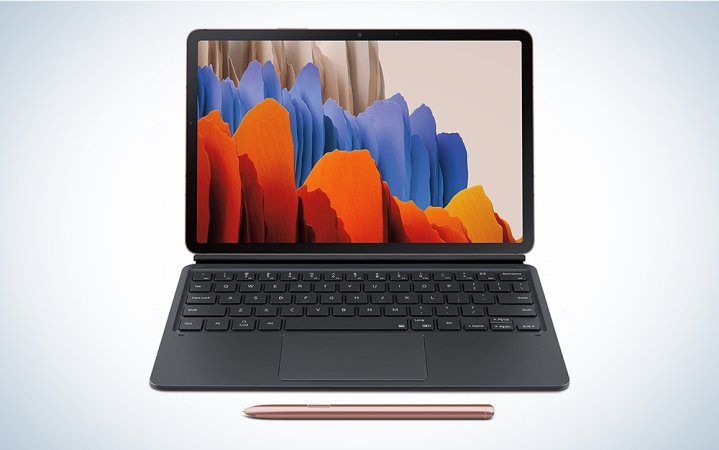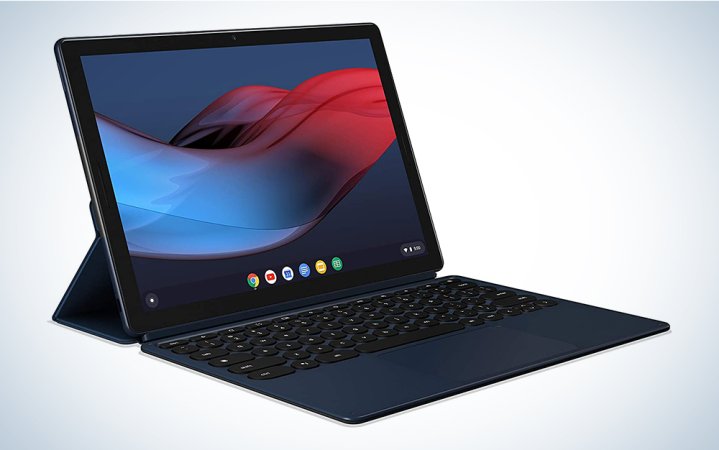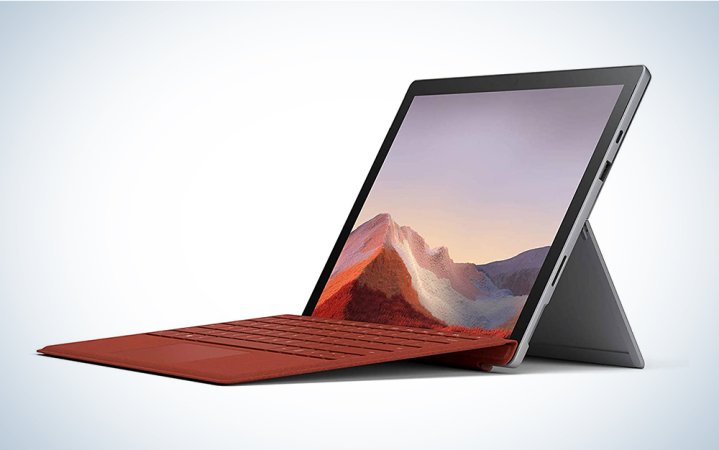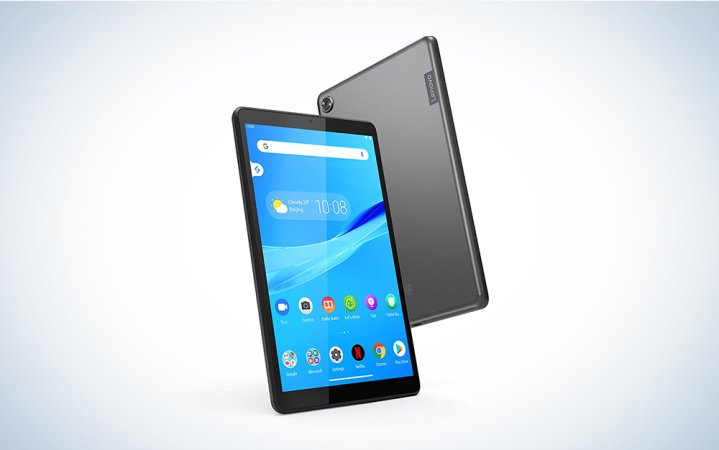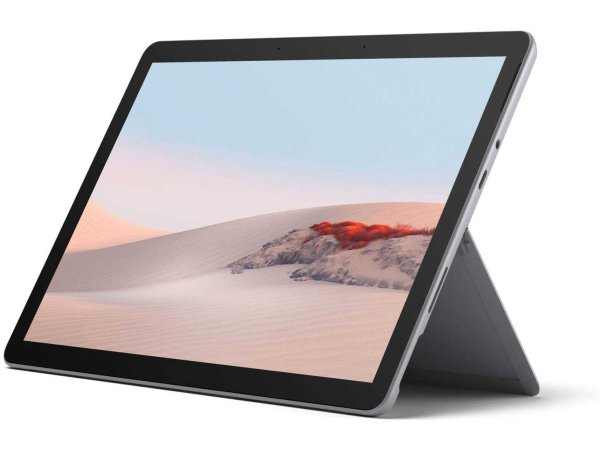We may earn revenue from the products available on this page and participate in affiliate programs. Learn more ›
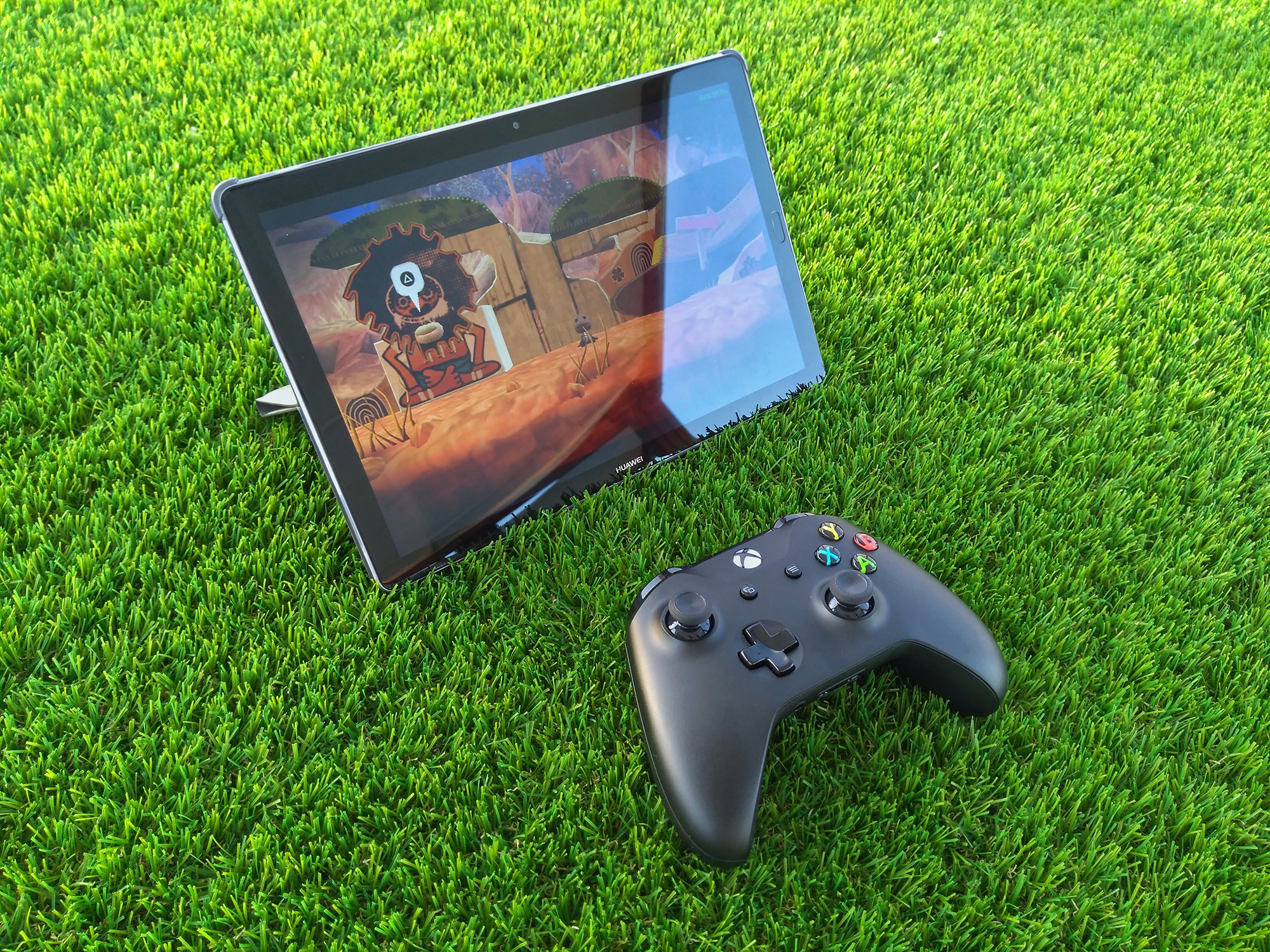
While far from the essential devices many predicted they would become, tablets have evolved into more than just slightly larger smartphones. With varying sizes, capabilities, and content focuses, shopping for a tablet involves careful consideration of your own habits and intended usage.
When the iPad launched in 2010, it thrust the tablet computer into the spotlight, but Apple doesn’t corner the market in this category. In fact, the idea for a portable touchscreen device actually dates back all the way to the 1960s. Researchers at Xerox’s Palo Alto Research Center kicked around an idea called the Dynabook in 1968. From this seed grew the GRiD Systems Corps’ GRiDPad at the tail end of the 1980s, which in turn branched out into the PDA (Personal Digital Assistant—not a public display of affection) with such memorable entrants into the category as the Tandy Zoomer and, the most famous, the PalmPilot.
The tablet as we know it is now more advanced, powerful, versatile, and, well, mercifully designed to look less like giant graphing calculators. Finding an Android tablet that can deliver what you want—from simply reading digital books to functioning as a laptop replacement—is easy given the range of devices available. It’s all about your priorities.
- Best tablet for viewing: Samsung Galaxy Tab S7
- Best tablet for multitasking: Google Pixel Slate 2-in-1 Tablet
- Best tablet for accessories: Microsoft Surface Pro 7
- Best tablet for battery life: Lenovo Tab M8
- Best tablet for remote connectivity: Microsoft Surface Go 2
- Best budget tablet: RCA Voyager
Things to consider when looking for the best Android tablet
Finding a tablet that runs on the Android OS opens you up to more variety and more options, so you can really hone in on a device that will suit your specific needs. Rather than trying to find one all-powerful device that will replace your desktop, smartphone, and entertainment system, you can find the one that does the one or two things that matter the most to you really, really well.
So, take into consideration what you hope to get out of the device. Do you want something extremely portable, or can you deal with a larger size? Do you want to load up on apps, or do you just need it to be a digital book? Whatever you’re looking for, you’ll want to keep these features and options top of mind when choosing the best Android tablet for you.
Is the screen size and resolution right for your bag and your eyes?
When considering the screen size and display resolution of an Android tablet, the first thing you should do is liberate yourself from any “bigger is better” thinking. It’s not necessarily the case, and you can and should be willing to, say, accept a smaller, slightly less dynamic screen if you don’t intend to use your tablet for watching movies or working on creative design projects.
However, consider that lower-cost tablets often feature 1024×600 or 1280×800 screens that can look grainy to the eye, so if you’re a stickler for detail or are worried about potential eye strain, you may want to upgrade to a better device. Higher-quality tablets are often in the 2048×1536 range, which is a notably sharper resolution.
There is also the question of portability. Even a seemingly slight change from a 7-inch tablet to a 10-inch model may mean increased weight, and will definitely mean an increased likelihood that your favorite shoulder bag or tote may not accommodate it as easily. Portability is a selling point of any tablet, but even here there are degrees. Will the tablet be something you have by your side all the time? Or is it simply a miniature television you carry from room to room and plop down? It’s a difference of only 3 inches, but it can influence how you use the device on a daily basis.
Best tablet for viewing: Samsung Galaxy Tab S7
Stream away
Great Screen For Viewing Bliss
Available with an impressive 11-inch display but still weighing only a hair over a pound, the Samsung Galaxy Tab S7 is designed for high impact movie viewing, and even gaming. Players can connect to their Xbox consoles via WiFi for a seamless gaming experience, which brings to life the 2560×1600 display. Want more screen room? Upgrade to the S7+ and you’ll have 12.4 inches of screen.
How much memory do you need?
Android tablets usually come with 8GB, 16GB, or 32GB of internal storage. Removable storage in the form of a MicroSD card is available on some Android tablets—the capacity of which can vary between 8GB and 64GB. Consider that a typical two-hour movie occupies about 4GB of storage, but even if you’re only storing music or photos, or just using the tablet itself a lot, that memory space will fill up faster than you realize.
However, if you’re just using your tablet for emailing, web browsing, and the odd app download, a tablet with a smaller memory capacity may be enough. It’s worth noting that depending on the manufacturer, tablet storage quoted and the amount of storage space actually available can be very different. Some storage is taken up by the operating system and pre-installed apps that you can’t delete, so you may find, for example, that a model advertised with 8GB of storage only has 5GB actually usable. Be sure to check for available memory.
Best tablet for multitasking: Google Pixel Slate 2-in-1 Tablet
Powerhouse
Everything In One Place
The Google Pixel Slate comes in as one of the most powerful Android tablets on the market. It has excellent screen clarity, and comes with plenty of hardware options for all of your productivity needs—you can select a Core M3, Core i5, or Core i7 processor. The Core i7 might seem like overkill for most users, but it has the processing power needed to handle multi-window applications. The Google Pixel has two USB-C ports for connecting external storage devices such as SD card adaptors, USB sticks, and external hard drives to further expand the storage capabilities.
Will you want to use accessories?
There are essentially two things to consider when looking for add-ons and accessories for your new tablet: safety and functionality (or just the “fun” part). To get the most out of your device while also ensuring you will use the device for a good long time is the name of the game here, and it makes things infinitely easier if you have a lot of styles and options to choose from. Given the relatively standard size of tablets, it’s not necessarily difficult to find accessories such as cases or covers, but you have to consider software compatibility for other connected accessories.
As anyone who has suffered the pain and indignity of wielding a smartphone with a newly spider-webbed front screen knows, protection will extend the life of your tablet by ensuring everything runs smoothly on the inside while still looking presentable on the outside. Covers run from the sleek and minimalist to the heavy-duty. The latter may make your tablet larger and more cumbersome but are often necessary — especially if you have young children. Meanwhile, stylus pens and detachable keyboards can go a long way toward making a tablet useful for passive entertainment and allow it to serve as a functional tool. C
Best tablet for accessories: Microsoft Surface Pro 7
Great for accessories
Connectivity Galore
The Microsoft Surface Pro 7 is for the person who has everything—and then some. This featherweight Android tablet comes with a stand that can prop the screen up into laptop mode, lower it into a 15-degree angle for studio mode, and kick the stand out for a freestanding tablet. It comes in chic platinum and matte black, with a detachable terra cotta keyboard and the option to use a stylus.
How much battery life do you need?
Humans used to measure the length of a workday by the rising and setting of the sun. Now, it’s seeing the tiny battery symbol in the upper corner of your device inch steadily towards a thin, red line that often determines quitting time. Battery life may be one of the most important factors when selecting a tablet, simply because it’ll determine whether or not your device of choice is a use-once-in-a-while novelty or a foundational piece of your everyday work and play.
Knowing that a certain device is able to withstand heavy usage without getting immediately zapped can be a convincing reason to buy it. However, it’s important to be aware that how you use the tablet will impact battery life. Certain apps are severe energy vampires if they’re left running in the background (Hello, Instagram), and quitting them after use will preserve battery life. Tablets can take anywhere from 3 to 6 hours to fully charge via the AC adapter and plug (which is preferable to and faster than charging via USB) so adopting that habit will save you time and headaches.
Best tablet for battery life: Lenovo Tab M8
Long battery life
Use For Hours And Hours
Powered by a Quad-Core, 2.0 GHz processor, and Android 9 Pie OS, the Lenovo Tab M8 is sleek and stylish. It has a gorgeous 8-inch display (at 1280 x 800 resolution) and built-in Bluetooth 5.0 and Wi-Fi connectivity. Featuring a 5000-mah battery capacity (which is significantly higher than a smartphone, which typically hovers between 3000 and 4000), the Lenovo tablet has a long battery life and should last most of your day with moderate usage.
Will you use the tablet where WiFi isn’t available?
There are essentially two ways to connect your Android tablet: WiFi or cellular. To sum up the difference between the two at their most basic: Wi-Fi has a limited range, cellular data does not.
As with every option available, there are pros and cons, and mitigating factors that need to be considered. For instance, a WiFi network uses short-range radio to connect to the Internet. Its range is limited, so if you leave your home or the library or the train station or wherever it is you’ve connected and are working, you will be cut off. The 3G-, 4G-, and 5G-LTE cellular technologies allow a tablet to connect to the Internet via a widespread cellular-phone network. You use it pretty much the same way you’d make calls with your cell phone. Of course, as with a smartphone, using the cellular network can incur additional charges or limit memory storage depending on your specific data plan.
Best tablet for remote connectivity: Microsoft Surface Go 2
Don't Let Your Location Stop You
When you’re stuck without WiFi wishing for something to do (or scrambling to meet a deadline), you need a tablet that can stand up to the task. The Microsoft Surface Go 2 features built-in WiFi and advanced LTE, so you can connect to the Internet without WiFi like you would on your smartphone. At only 1.2 pounds, you can take this tablet anywhere, regardless of “anywhere’s” WiFi Status.
Brands to know
Apple is dominant in the tablet category, and some companies that were in the Android tablet game have pivoted away to focus on other devices and products. Those who remain, however, are names you certainly know and absolutely rival Apple’s for simple name recognition. These are some of the most trusted names in technology, so you can rest assured they are quality products.
Samsung
A South Korean tech conglomerate powerhouse, Samsung has been manufacturing consumer electronics for decades. Samsung can trace its origins all the way back to 1938, when it was a trading company. It produces everything from Blu-ray players to smart speakers to televisions to smartphones and beyond.
Microsoft
A multinational technology company that is synonymous with computers, Microsoft started out in the early 1970s as the brainchild of Bill Gates and Paul Allen. The launch of Microsoft Windows in 1985 changed the landscape of personal computers forever, and allowed Microsoft to grow into an enormous entity that touches on hardware, software, gaming, and so much more.
What you get for under $60: best Android tablet on a budget
The highly affordable RCA Voyager is also very lightweight and portable. The 7-inch touchscreen is highly responsive, and it runs on Android 8.0 Oreo. One of the major pluses is that it comes out of the box with 1GB of memory and 16GB of storage. Those aren’t knock-your-socks-off numbers, but they are more than sufficient and somewhat surprising given the price point. This budget Android tablet is great for simple tasks such as streaming video, reading ebooks, and browsing the web, and can connect via WiFI and Bluetooth. There’s even a decent camera for Zoom meetings.
A final note about shopping for the best Android tablets
Despite being ubiquitous, Apple is not the only option when it comes to tablets. Those who prefer the Android OS still have a lot of sleek, functional, and powerful tablets to choose from, each one delivering deep wells of productivity apps, storage capabilities, and dynamic, impressive visuals. Knowing your own usage habits is key. Someone who is looking to work on the go—hopping from the train station to train to the office—will require a bit more flexibility than someone who is content to prop it up on an arm rest and relax. No matter where you fall on the spectrum, however, the best Android tablet for you is out there.
